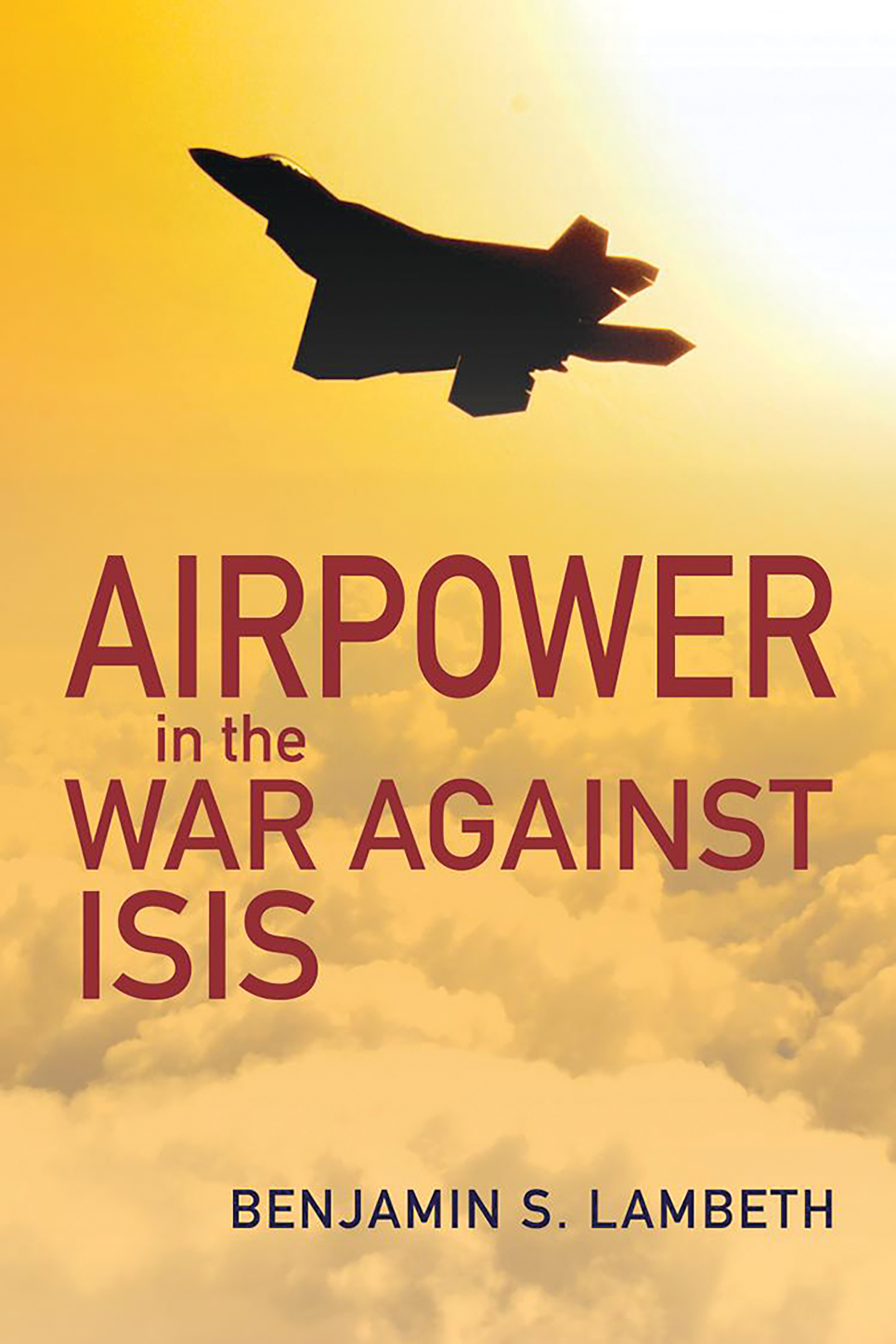Download PDF
Major General Charles J. Dunlap, Jr., USAF (Ret.), is Executive Director of the Center on Law, Ethics, and National Security at the Duke University School of Law.

Airpower in the War Against ISIS
By Benjamin S. Lambeth
Annapolis: Naval Institute Press, 2021
352 pp. $55
ISBN:978-1682475577
Reviewed by Charles J. Dunlap, Jr.
In Airpower in the War Against ISIS, Benjamin Lambeth not only weaves an account that celebrates the decisive role he insists airpower played in the defeat of the so-called Islamic State (IS) but also depicts tragically missed opportunities and almost incomprehensibly poor judgment on the part of U.S. civilian and military leaders that unnecessarily delayed that defeat.
I have long admired Dr. Lambeth, a former RAND researcher with a long list of airpower-related writings, including in-depth examinations of airpower’s role in conflicts such as Kosovo, Afghanistan, and the 2003 war in Iraq. Indeed, he has established himself as one of American airpower’s leading chroniclers—and advocates—in the post-Vietnam era.
To make his case about the war against IS, Lambeth uses an enormous amount of publicly available official documentation, academic scholarship, as well as media reports and commentary. What makes his writing particularly interesting, however, are the scores of personal interviews he conducted along with emails he exchanged with participants—especially U.S. Air Force officers—about the operation, a style that has become something of his trademark.
Lambeth charts the transformation of American airpower in the years after Vietnam and points to “breakthrough developments in the realms of stealth, precision strike capability, and enhanced battlespace awareness”—all accompanied by better training and the development of fresh ideas about force application. Lambeth argues that despite success in Operation Desert Storm and Kosovo, airpower was too often underused and ill-used in post-9/11 counterinsurgency (COIN) fights in Iraq and Afghanistan and continuing for much of Operation Inherent Resolve.
Airpower in the War Against ISIS is not simply a history of events; it is an analysis of the policies and strategies that governed the campaign against IS. Many will find that analysis uncomfortable, as Lambeth does not hesitate to point fingers. For example, Lambeth traces the issues that manifested themselves in Inherent Resolve to the tenure of former Secretary of Defense Robert Gates. Though Gates was gone before the IS threat emerged, his disparagement of the Air Force as suffering from “next-war-itis”—that is, too much focus on possible conflicts with peer or near-peer competitors, such as China and Russia, instead of on the COIN conflicts—eroded what Lambeth argues was the “once orderly maturation of American air and space power.”
This issue and other factors led to an “institutional identity crisis” for the Air Force, which in turn produced “a gradual but inexorable erosion” of thinking and planning skills that “had previously developed to a high art form toward making American airpower so decisive in previous tests of strength.” Lambeth believes that the Air Force centered itself so much on the COIN fight that its skills to fight other types of adversaries atrophied. Furthermore, Lambeth argues that since 9/11, the leadership of U.S. Central Command (USCENTCOM), the organization responsible for the Middle East, had been overwhelmingly dominated by Army and Marine officers who did not fully grasp the warfighting potential of airpower. This excessively ground-centric orientation would persist into Operation Inherent Resolve to the campaign’s detriment.
Lambeth finds that when the IS threat became impossible to ignore in 2014, the U.S. reaction, hobbled by political restraints, resulted in a “lethargic and directionless air effort.” Moreover, Lambeth finds USCENTCOM’s strategy to have been fundamentally flawed as the command applied a “planning template for winning indigenous hearts and minds in a COIN war to a totally different class of enemy that needed to be dealt with instead as a self-avowed state possessing territory, and infrastructure, and economy, a central nervous system, a targetable leadership, and the beginnings of a conventional army.” Additionally, Lambeth contends the inappropriate COIN orientation resulted in what he characterizes as “counterproductive rules of engagement” (ROEs). Lambeth describes a highly restrictive ROE process that required convoluted coordination and vetting procedures that, among other things, demanded virtually no civilian casualties. More effective processes were implemented with a change of administration, eventually devastating IS.
Lambeth makes clear that despite ultimately achieving success, “ill-advised leadership directives, in this case an inappropriate gradualist strategy at the campaign’s start that misunderstood the enemy and wrongly insisted on ROE intended for a different kind of war,” cost lives. He bluntly charges:
[T]here were the incalculable but monumental human costs that were imposed by the war’s overly prolonged and pointless early incrementalism. Without seeking at this point to provide even a rough estimate of the number of innocent Iraqis and Syrians who were killed or wounded throughout the more than four-year-long campaign, the anemic start that President [Barack] Obama insisted on at the effort’s outset and sustained with no truly consequential escalation for two more years produced millions of displaced civilians and caused a profusion of noncombatant fatalities in both countries, most of them at the hands of [IS] marauders rather than as the result of any errant coalition bombs.
Lambeth’s book is especially timely, as it comes as the Department of Defense is implementing its much-touted Civilian Harm Mitigation and Response Action Plan. This plan aims to institutionalize a bureaucracy with restrictive use-of-force policies that are disturbingly similar to that which proved so problematic in the air war against IS.
Airpower in the War Against ISIS stands for the proposition that airpower forcefully applied in a timely manner by savvy commanders will accomplish the mission with the least amount of civilian harm. It is a must-read not only for military professionals but also civilians wanting to understand how airpower could be optimally used in modern battlespaces. JFQ